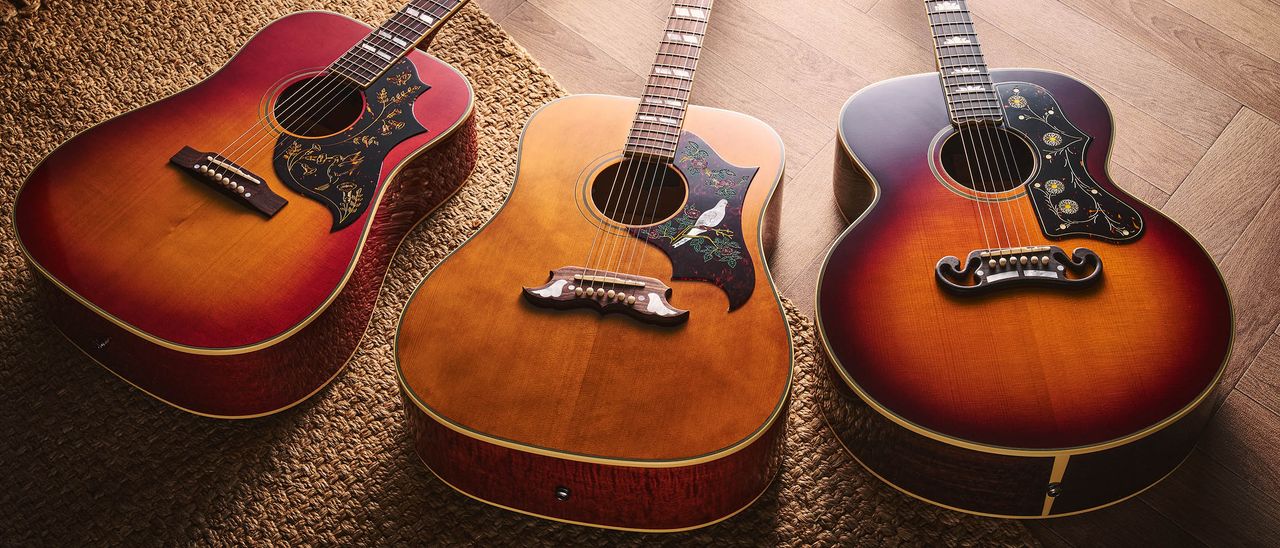
What is it?
Epiphone has certainly upped its game in recent years. Whereas we were once used to seeing bargain-basement copies of famed Gibson originals, these days the brand has clearly been rummaging through its parent company’s history books to produce some extremely worthy replicas of time-honoured and highly sought-after guitars.
Hooking up with Gibson’s Custom Shop has provided us with era-specific editions, such as a 1959 Les Paul Standard, a 1959 ES-355, a 1942 Banner J-45, plus Firebirds, Flying Vs and Explorers.
Some die-hard critics have whinged a little about the price hike needed to produce Epiphone guitars that feature USA parts and electronics, solid woods and so on. But we remain with eyebrows raised at the output that has landed with us so far and consider the price tags reasonable in view of what exactly is on offer.
Okay, so we have identified the occasional flaw but, in general, everything has been pretty much in tip-top shape.
So when Epiphone told us there were six new Inspired By Gibson Custom acoustic guitars waiting in the wings, breath in these parts became somewhat bated. After all, we agreed that the Banner J-45 we reviewed was a tough one to let go at just under $1,299/£1,200. It really was that good (as the 5/5 score also demonstrated).

What is really intriguing about the trio we’re looking at today is that each comes with a little bit of historic detail. For instance, take the Pre-War SJ-200. Why this particular period? Well, when the model first appeared in Gibson’s catalogue in 1937, it had a back and sides made from rosewood and, thanks to a knock-on effect from the 1929 financial crisis in the US, only a handful of Gibson’s costly flagship acoustic ever saw the light of day.
In 1947, after supply shortages post-WWII, backs and sides were changed to maple. This means the rarer early pre-war models have become the most sought after on the collector’s market. And even 1940s SJ-200s go for around $/£15,000-plus today, so making the original spec available at a tenth of that price is very sound reasoning in our book.
We’ll look at each of these guitars individually as they are all quite different. And seeing that we’ve already begun talking about the SJ-200, we might as well start there first.
Pre-War SJ-200 Rosewood Reissue
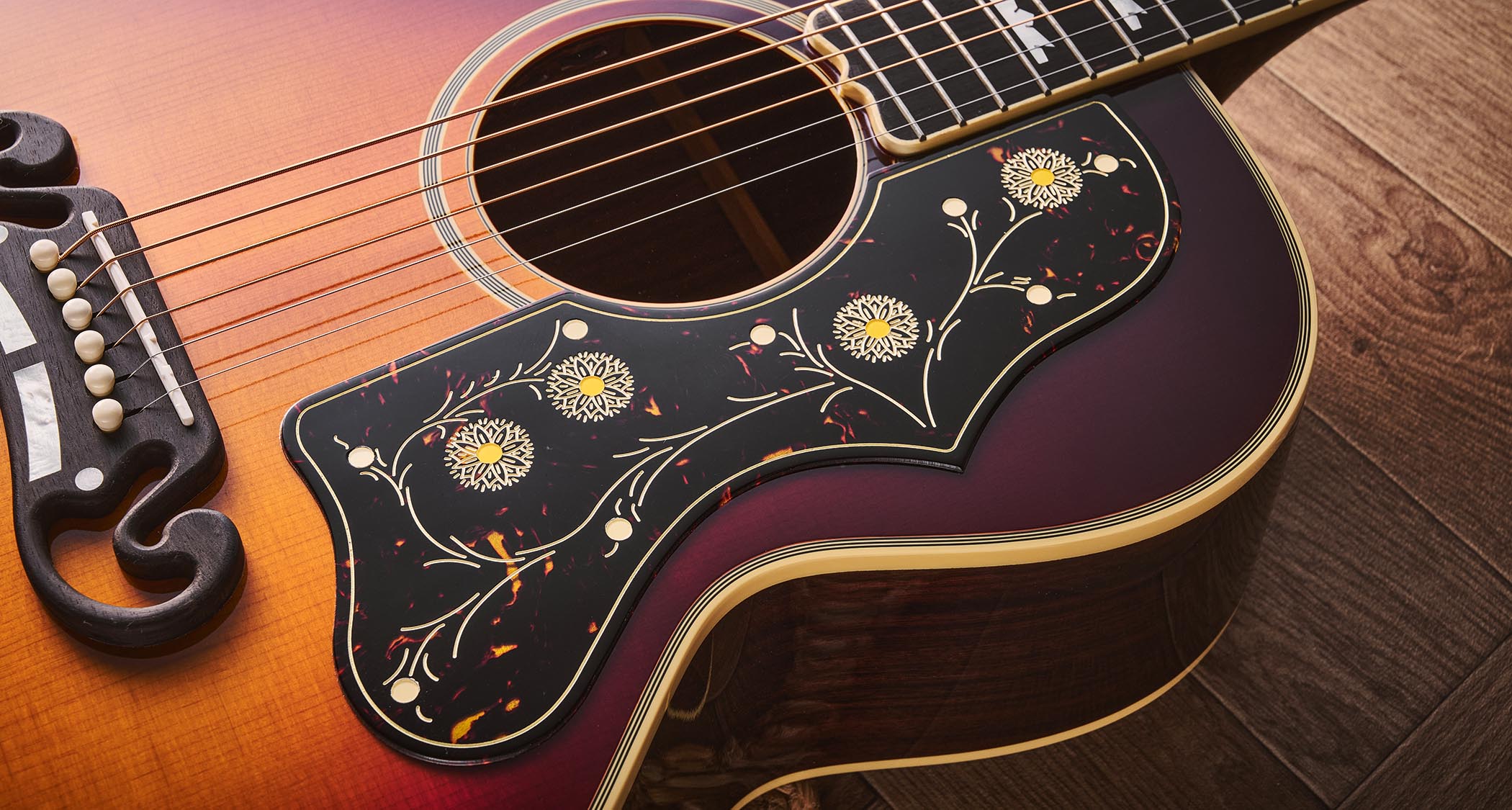
Gibson’s history reveals that, on release, the SJ-200 “quickly earned the title ‘King Of The Flat Tops’ due to its superior sound, physical size, outstanding projection and majestic appearance”. And it certainly is something of a whopper – the ‘SJ’ in the model designation stands for ‘Super Jumbo’, after all – with a maximum body width at a very fulsome 427mm (16.8 inches).
But Gibson is right about the majestic appearance, with gold Grover Imperial tuners, real mother-of-pearl ‘graduated crown’ inlays, ornate pickguard and two-bar ‘moustache’ bridge. The pre‑war-style script logo on the headstock is a nice touch, too.
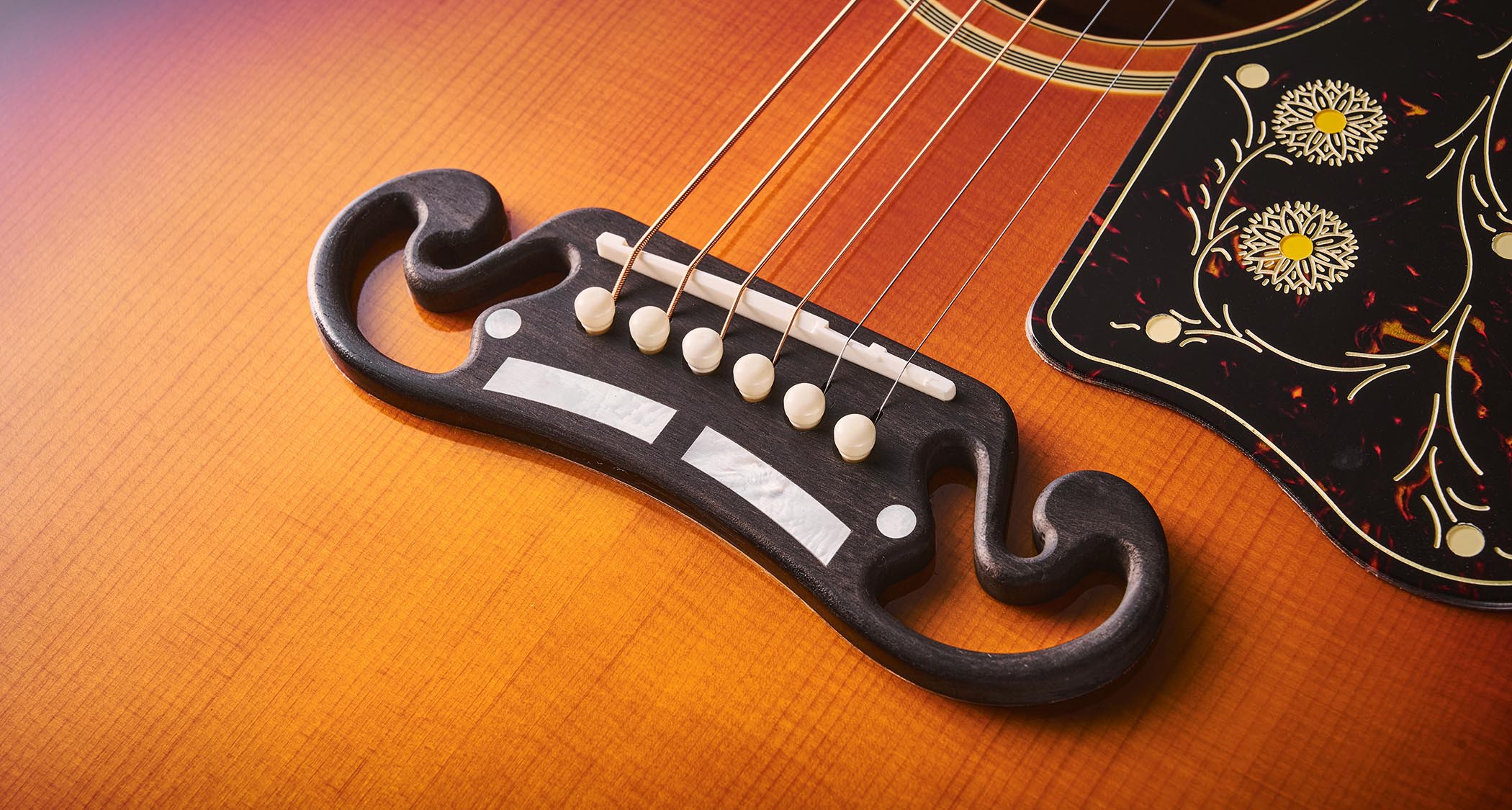
We’re reminded that this was the instrument – a ’65 borrowed from Mickie Most – that Jimmy Page used on Led Zeppelin’s first album for the acoustic tracks Babe I’m Gonna Leave You, Your Time Is Gonna Come and Black Mountain Side. Jimmy is on record saying that Mickie’s came with a tune-o-matic bridge, a Gibson experiment that only lasted for a couple of years.
Epiphone’s homage is a looker in every sense of the word. But so much for cosmetics and ornamentation, it’s time to take a peek under the SJ-200’s bonnet.
We’ve already seen that we have rosewood for the back and sides and this is complemented by a “thermally aged” spruce top, meaning the wood has been heat-treated to simulate the drying-out process that would normally take years, if not decades.
The neck is a two-piece maple affair with a rosewood ‘stinger’ to the back of the headstock. The bridge is ebony, with mother-of-pearl inlays, and both string saddle and nut are bone.
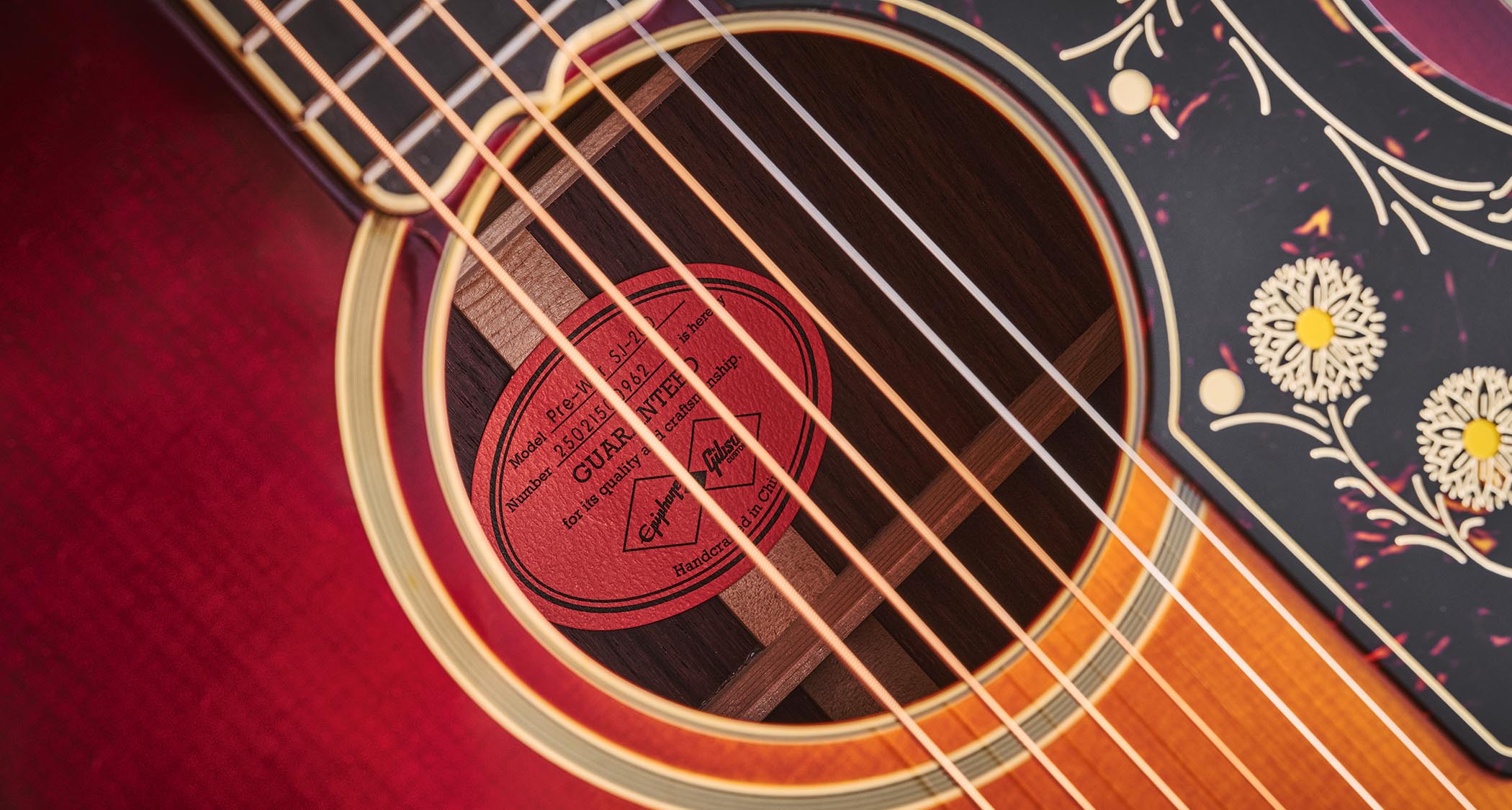
It’s interesting to note that Gibson’s paperwork for each instrument states that the Epiphone models are “inspired by” the originals, as opposed to being historically accurate dead-ringers.
The history books tell us that the 1937 models came with an adjustable bridge and a scale length of 660mm (26 inches) as opposed to the static bone saddle and 648mm (25.5 inches) we find here. In fact, the SJ-200 went through several iterations in its youth, with the spec only relatively recently settling down to the guitar we know today.
Like its siblings, this SJ is kitted out with an LR Baggs Bronze Element VTC under-saddle pickup and preamp, with the controls accessible via the soundhole.
1960 Hummingbird Reissue
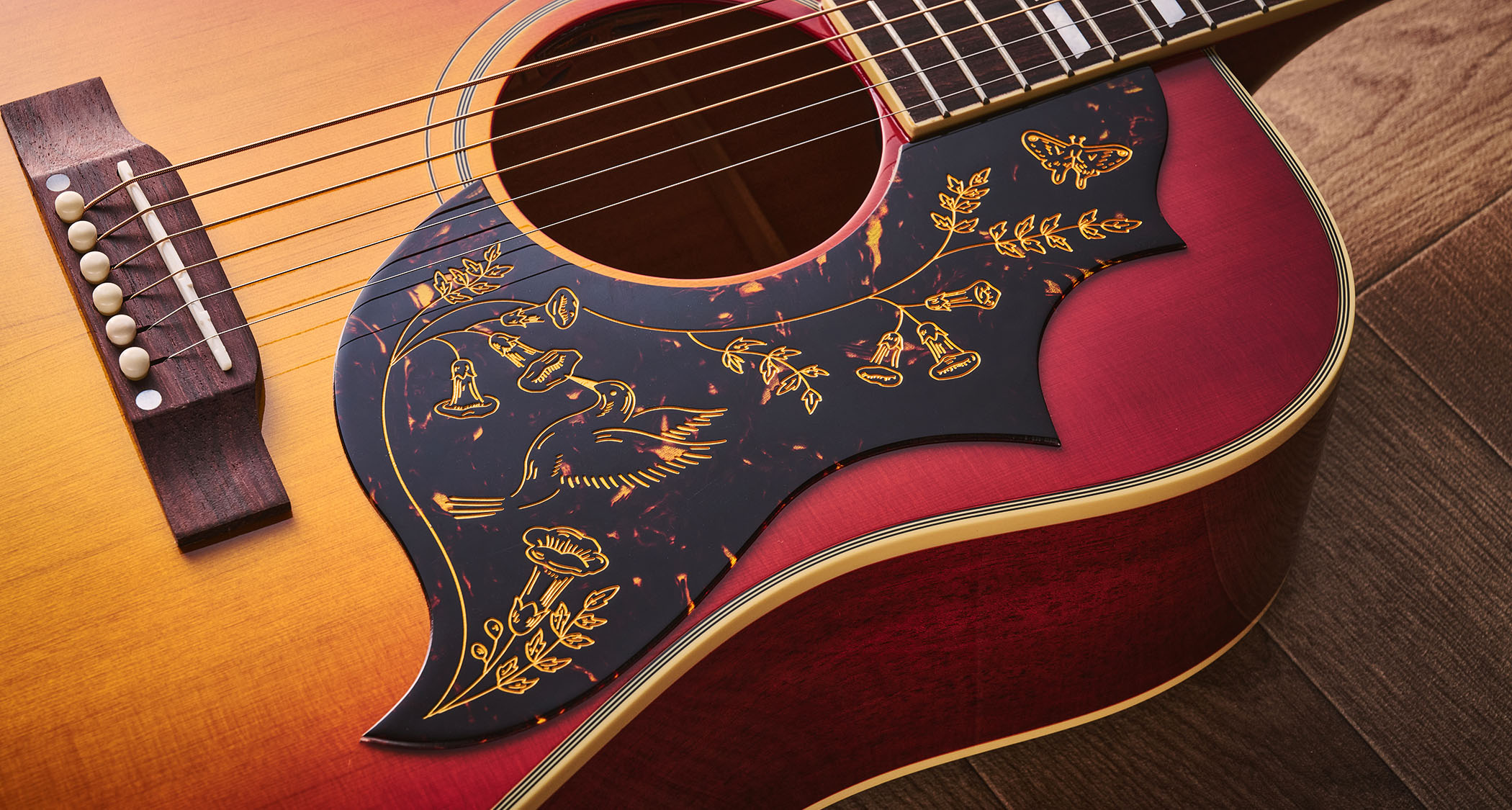
Switching over to the first of our two ‘birds’, the timestamp here is the beginning of the ’60s and a whole new era in music and guitar players alike. Arguably, Gibson’s most revered of its high-end acoustic guitar range, opening the Hummingbird’s case was like greeting an old friend.
Gibson’s first square-shoulder acoustic to enter its catalogue, the Hummingbird was seen in the hands of the new breed of ’60s guitarists, notably Keith Richards and Brian Jones of The Stones and, coming more up to date, Joe Bonamassa, Gillian Welch and Thom Yorke. Second only to the J-45 as a do-it-all workhorse, this ’Bird was known for its ability to handle virtually anything from energetic strumming to sensitive fingerstyle.
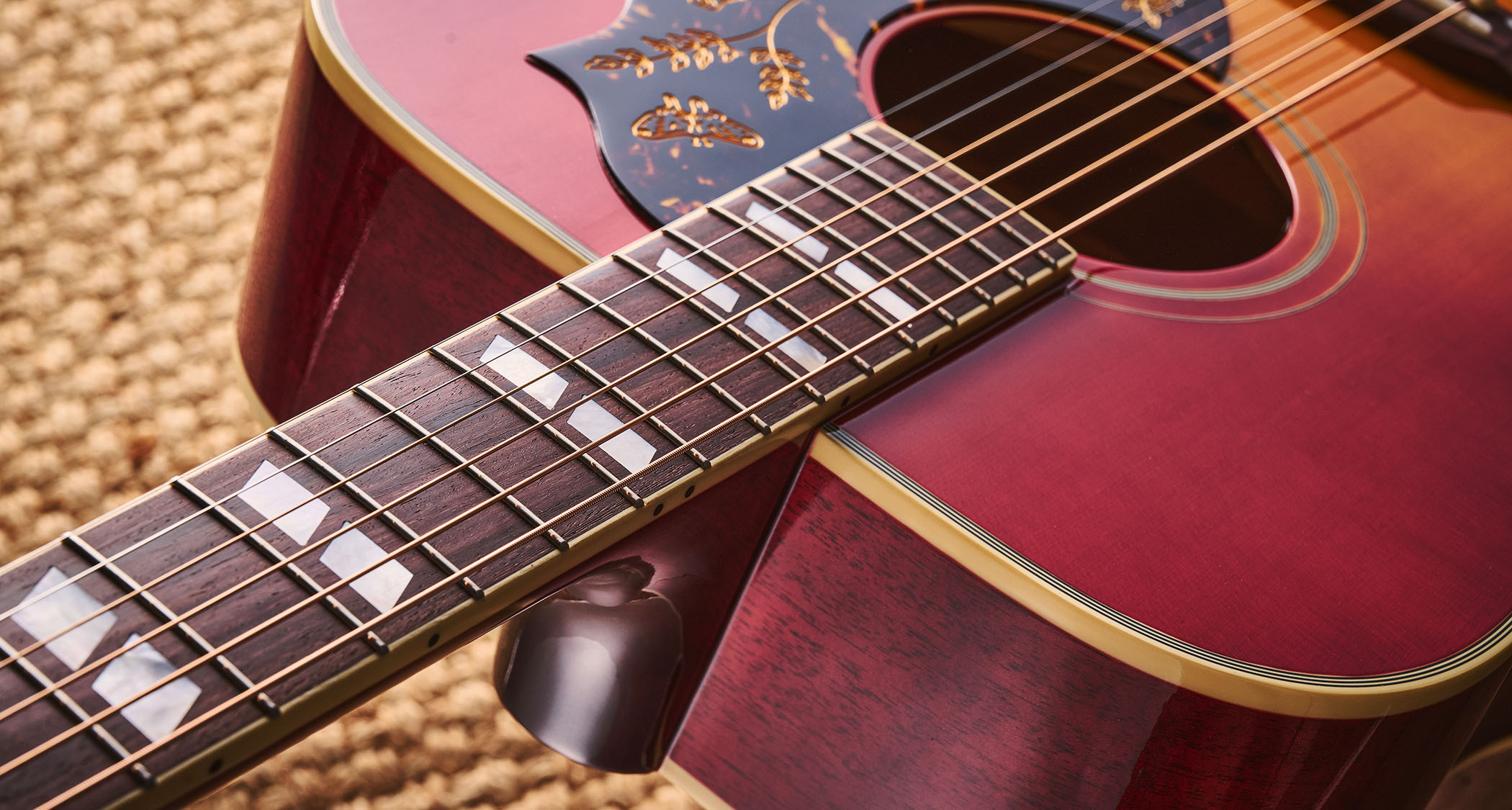
Epiphone’s tribute captures the moment with a fine-looking Cherry Sunburst finish – poly here, of course – fancy pickguard, mother-of-pearl split-parallelogram inlays, bound rosewood fingerboard, gold tuners and the ‘proper’ headstock shape.
Once again we find a thermally aged spruce top, but this time the back and sides are mahogany, as is the one-piece thermally aged neck. Bridge pins, string saddle and nut are all bone and the ‘belly up’ bridge itself is rosewood.
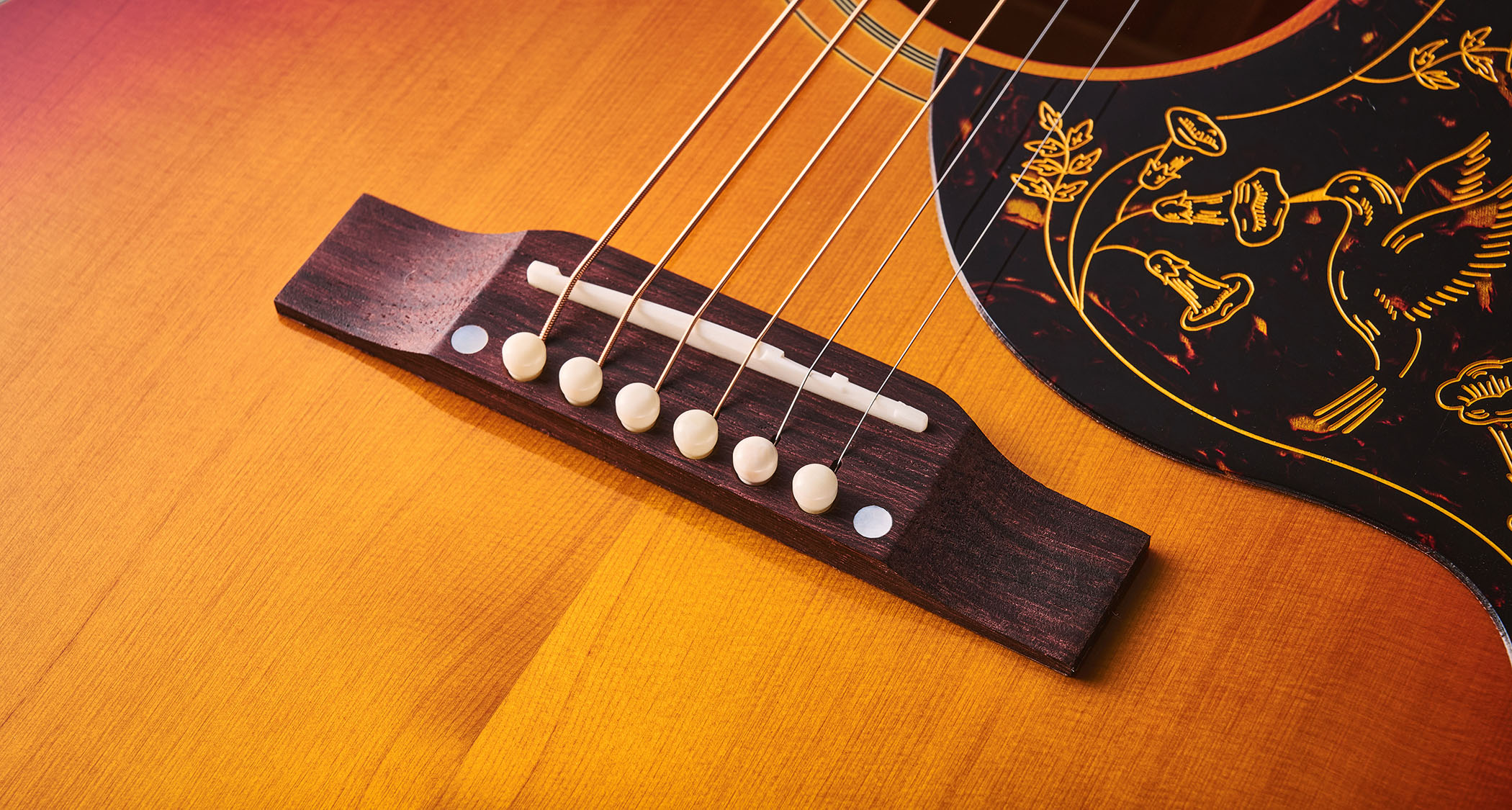
In contrast to its two companions, the Hummingbird’s scale length is 629mm (24.75 inches), which is more familiar to players who pack a Les Paul and, again, if you’re thinking of taking the Hummingbird to your next gig, it’s stage ready with that LR Baggs Bronze Element VTC.
1963 Dove Reissue
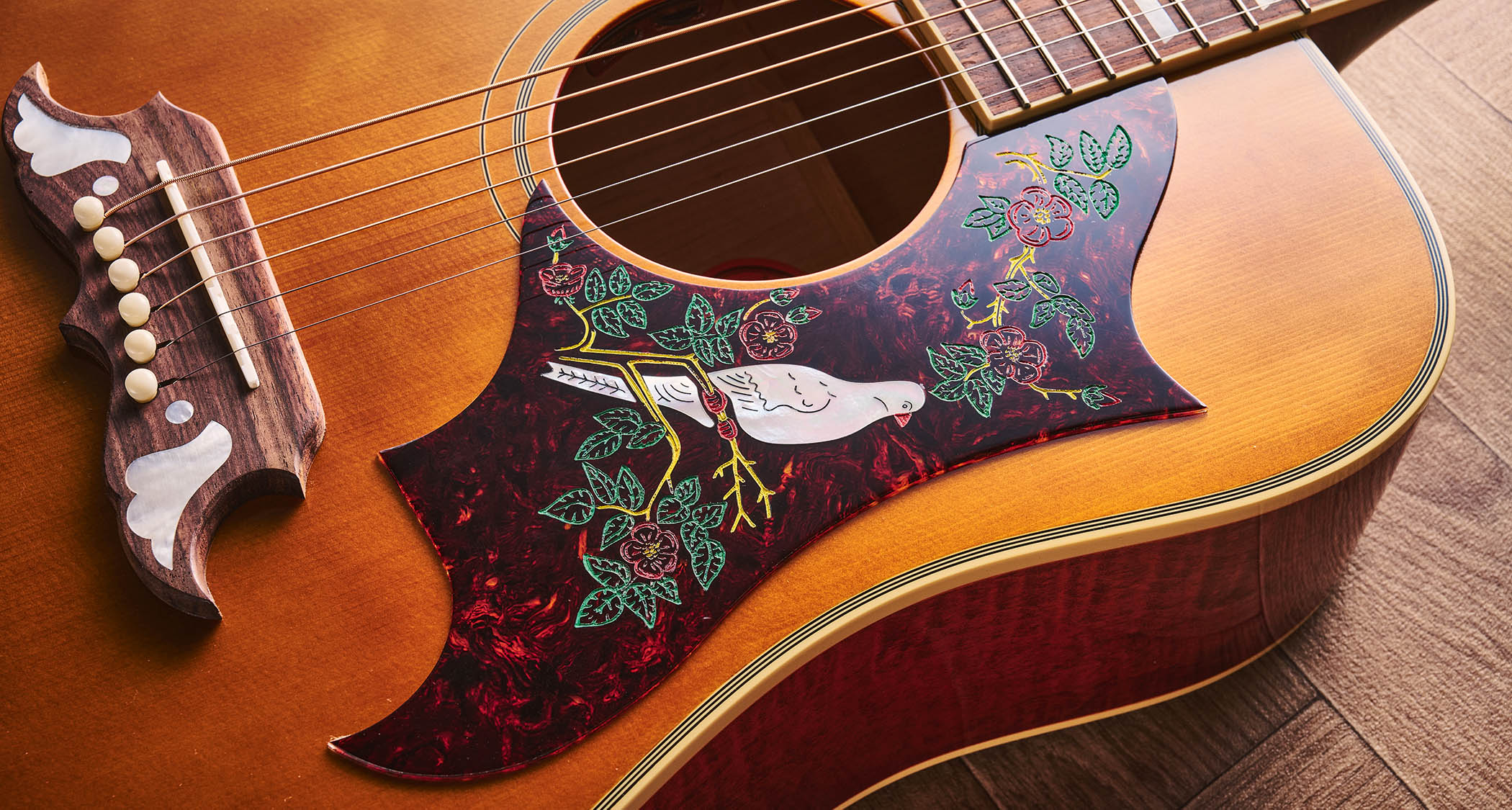
Our third glimpse into Gibson’s acoustic past comes in the form of the Dove. First introduced in 1962 as the company’s second square-shoulder acoustic, our Epiphone model is, according to the spec, “a stunningly authentic recreation of the iconic early Dove models from 1963”. Why not 1962? That’s not clear.
The Dove was partnered with some impressive names from the pop and rock world, too, with artists such as Elvis, Tom Petty and Alex Lifeson among its many fans, but it perhaps doesn’t quite have the same legendary status as the other two models here.
Its spec is similar to the Hummingbird, save for the fact the Dove’s back and sides are flamed maple, as opposed to mahogany or rosewood. We’ve also returned to the longer 648mm (25.5-inch) scale length, as opposed to Hummingbird’s shorter version.

A closer look at the body woods reveals that the top is, as before, thermally aged spruce, but this time the finish is Natural and so more grain information is evident. There’s a slight mottling to the top – we’re not clear whether this is a clear coat of poly that hasn’t been evenly applied, or just that the torrification process sometimes produces this effect. In any case, it’s only slight and miles away from a dealbreaker.
The maple is gloriously stripy on the sides, but the back shows only a slight rippling effect. The Dove has a one-piece mahogany neck with an Indian rosewood fingerboard, mother-of-pearl split-parallelogram inlays, and Kluson Waffleback tuners with metal keystone buttons.
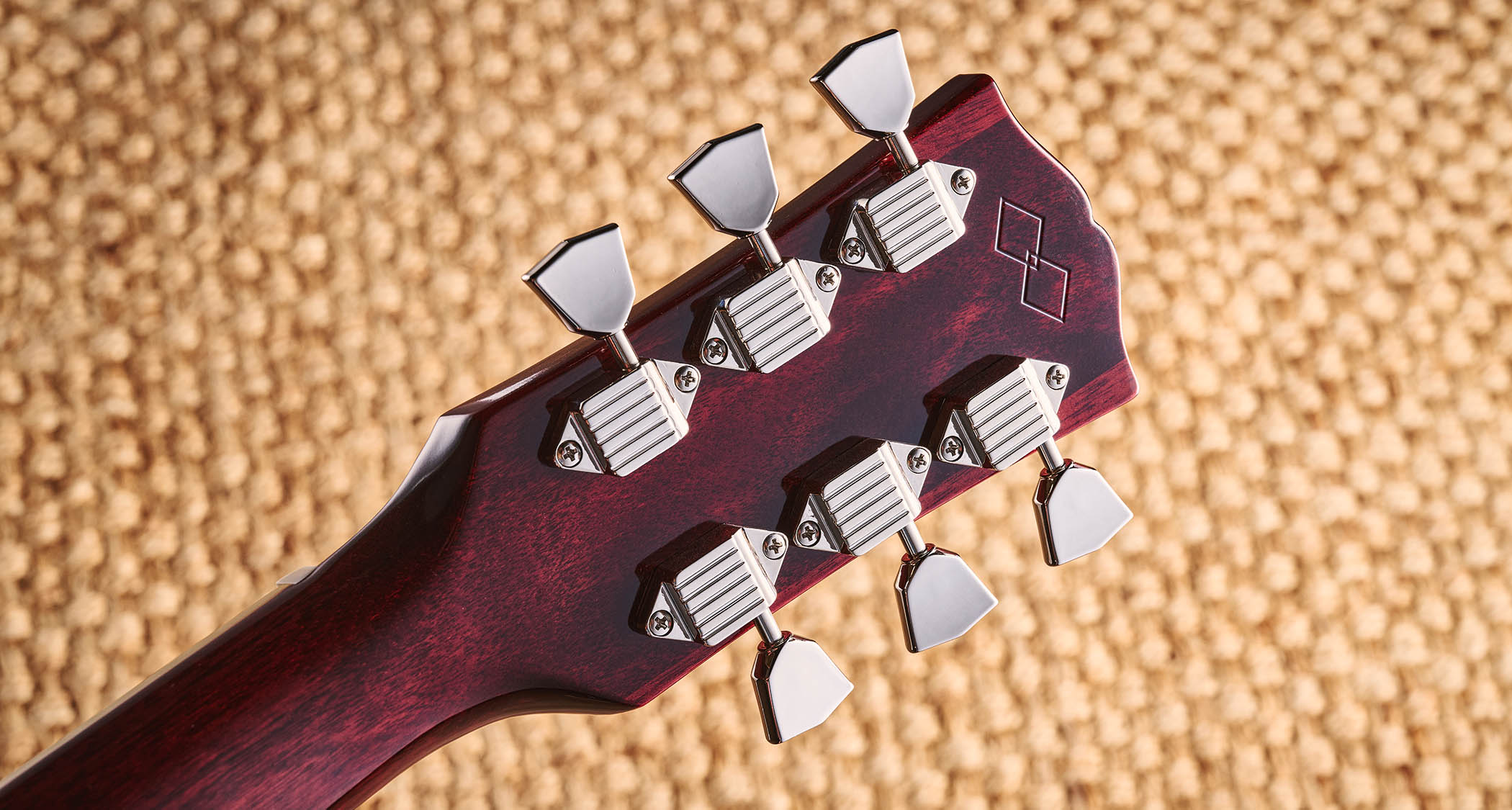
As far as decorative features are concerned, the Dove-style pickguard is a work of art, with the mother-of-pearl dove reflected in the bridge.
Needless to say, electronics are courtesy of an LR Baggs Bronze Element VTC once again. So the next stage is to hear how these historic reissues sound in action.
Specs
Epiphone Pre-War SJ-200 Reissue

- Price: $1,499/£1,399 (inc case)
- Origin: China
- Type: Super Jumbo
- Top: Thermally aged spruce
- Back/Sides: Rosewood
- Max Rim Depth: 123mm
- Max Body Width: 427mm
- Neck: Maple
- Scale Length: 648mm (25.5”)
- Tuners: Grover Imperial
- Nut/Width: Bone/44.2mm
- Fingerboard: Ebony
- Frets: 20
- Bridge/Spacing: Ebony/55mm
- Electrics: LR Baggs Bronze Element VTC
- Weight (kg/lb): 2.5/5.6
- Left-Handers: Yes
- Finish: Vintage Sunburst
Epiphone 1960 Hummingbird Reissue

- Price: $1,299/£1,099 (inc case)
- Origin: China
- Type: Square-shoulder dreadnought
- Top: Thermally aged spruce
- Back/Sides: Mahogany
- Max Rim Depth: 123mm
- Max Body Width: 404mm
- Neck: One piece mahogany
- Scale Length: 629mm (24.75”)
- Tuners: Epiphone Deluxe with green keystone buttons
- Nut/Width: Bone/44.91mm
- Fingerboard: Indian rosewood
- Frets: 20
- Bridge/Spacing: Rosewood/56mm
- Electrics: LR Baggs Element Bronze VTC
- Weight (kg/lb): 2.08 /4.6
- Left-Handers: Yes
- Finish: Heritage Cherry Sunburst
Epiphone 1963 Dove Reissue
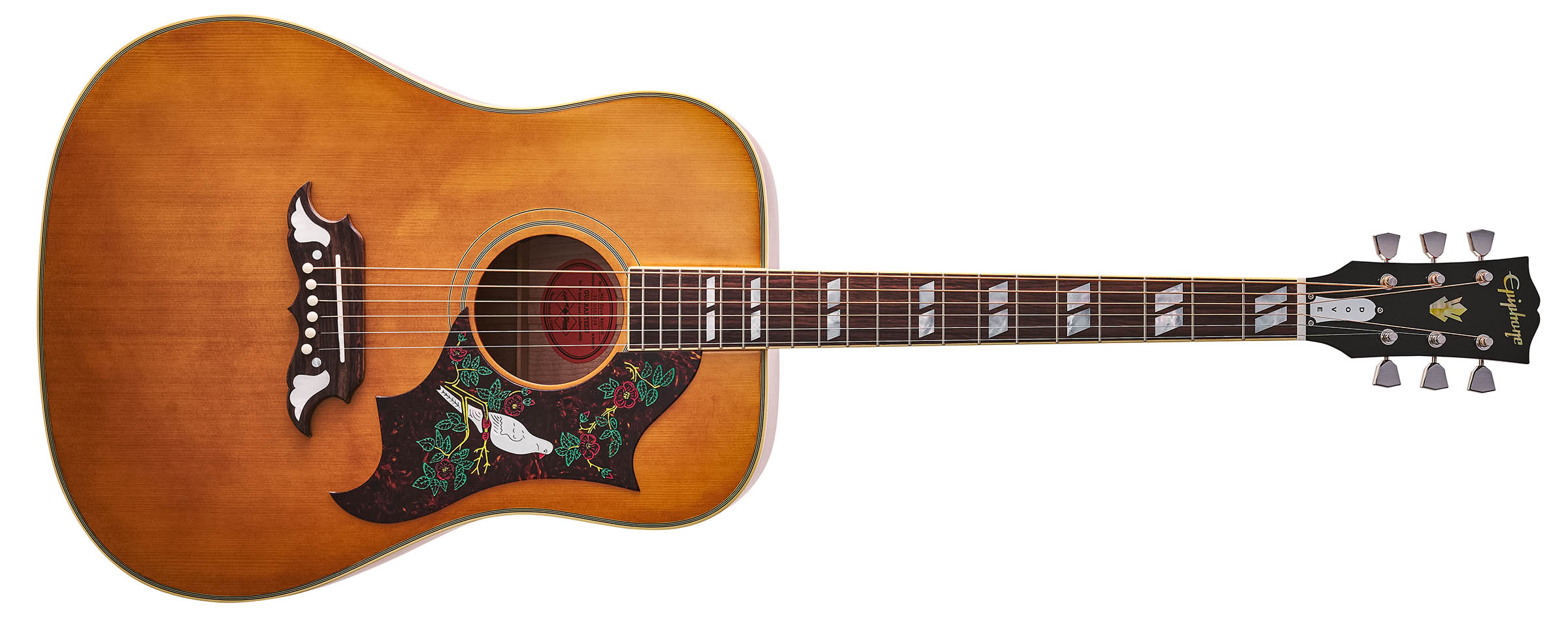
- Price: $1,399/£1,099 (inc case)
- Origin: China
- Type: Square-shoulder dreadnought
- Top: Thermally aged spruce
- Back/Sides: Figured maple
- Max Rim Depth: 121mm
- Max Body Width: 404mm
- Neck: Thermally aged mahogany
- Scale Length: 648mm (25.5”)
- Tuners: Kluson Waffleback with metal keystone buttons
- Nut/Width: Bone/42.9mm
- Fingerboard: Indian rosewood
- Frets: 20
- Bridge/Spacing: Rosewood/55mm
- Electrics: LR Baggs Element Bronze VTC
- Weight (kg/lb): 2.1/4.8
- Left-Handers: Yes
- Finish: Natural
- Contact: Epiphone
Playability and sounds
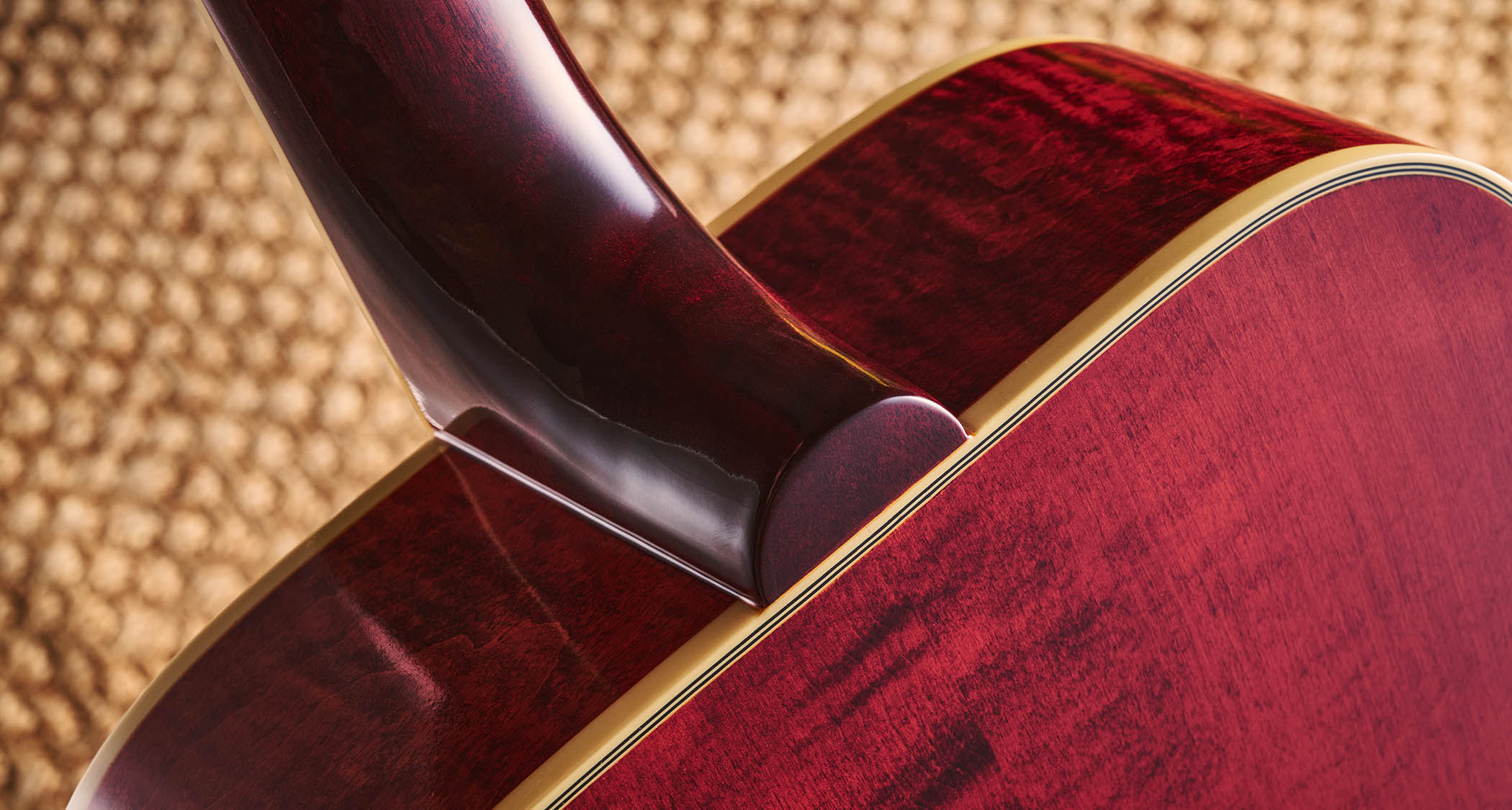
Returning to the SJ-200, and before we’ve even played a note, our attention is drawn to the weight and bulk of this guitar. As far as the actual proportions are concerned, well, it is what it says on the tin – a Super Jumbo.
So you’d expect a guitar with that designation to be something that’s a bit of a lapful. A lower-bout body-width of the aforementioned 427mm is certainly not for the faint-hearted, after all.
Where the weight is concerned – all 2.5kg (5.6lb) of it – we suspect this is down to the fact that timber can swing between super-light to 1970s Les Paul Custom super-heavy, depending on what manufacturers have in the factory at the time. So your experience here could vary. Aside from that, it’s a big guitar and so it’s going to weigh in more than, say, a dreadnought or OM.

Epiphone describes the neck profile as being a “round D” and at 22.3mm deep at the 1st fret it certainly feels quite chunky. Action at the 12th fret is slightly higher than we’d choose – at just under 3mm on the bass side, if your preferred string-height is lower, the saddle would need a minor adjustment.
The nut could probably have done with a few more minutes on the workbench, too, as a couple of the strings were a little ‘sticky’ on tuning and some of the slots were cut too high.
However, when we played our first chord, all the minor niggles vanished as the SJ showed its true character – it’s loud, proud and possesses all of that wonderfully woody depth and tone for which this model is renowned.
And for only a fraction of what the Gibson equivalent would cost, too. If you were looking for those Jimmy Page Led Zep I acoustic tones, they’re all here – and you’d be ready to take centre stage, thanks to the onboard LR Baggs Bronze Element VTC.
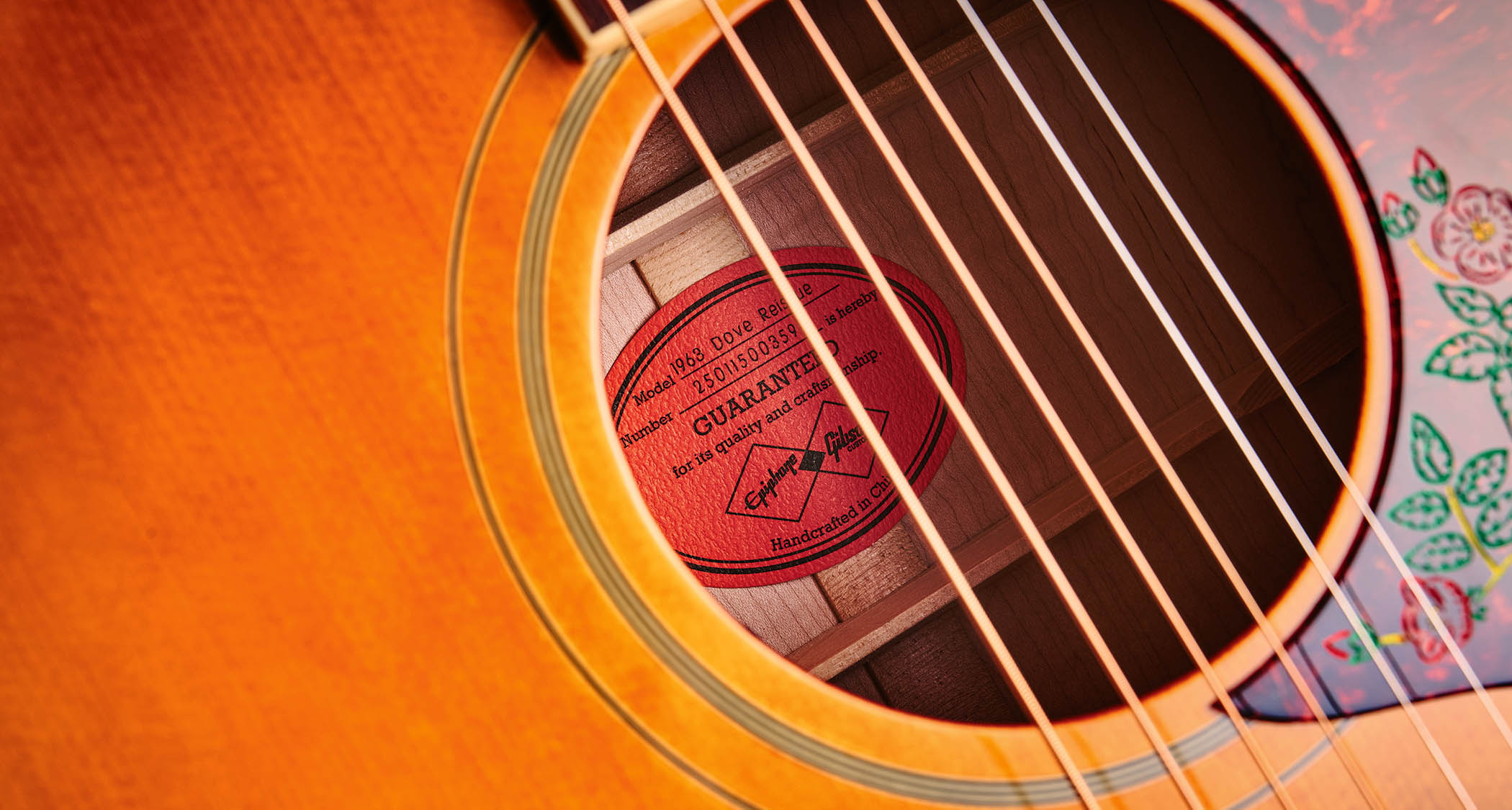
Freeing the Hummingbird from its case, its dreadnought body size, lighter weight and shorter scale-length all deliver a sense of compactness, after the bulk and weight of the SJ.
The neck profile here is what Epiphone enigmatically refers to as merely “rounded”, but we measured the 1st-fret neck-depth at a substantial 23mm. A close look at the nut revealed the Hummingbird has fared better than its bigger sibling, but, alas, the action is still higher than we would like.
Once again, though, sitting and playing the instrument turned out to be easily on a par with what we found on the SJ. It sings. Simple as that. Volume and power is combined with that familiar woody sweetness and authority throughout the range and it certainly doesn’t suffer from a lack of bassy grunt, either. It definitely has that Gibson vibe to the sound, but for only a fraction of the cost.

The Dove sits well in line with its two partners in that the action is on the high side, but the cut of the nut is definitely the best of the three. And with a 1st-fret neck depth of 21mm, we’re back to a slimmish C profile – although Epiphone still refers to it as simply “rounded” here, too.
Sound-wise, that maple back and sides, and possibly the longer scale, brings brightness to the sound picture, but all the power that we’ve already met from the other two guitars is still present. It’s as if someone has turned up the treble control on your amp a little, that’s all. Otherwise, it’s a similar ride to the others.
The LR Baggs acoustic guitar pickup system is common to all three and it proved a faithful companion to have onboard, giving a very good representation of the guitars’ acoustic characteristics.
Verdict
Verdict: ★★★★☆
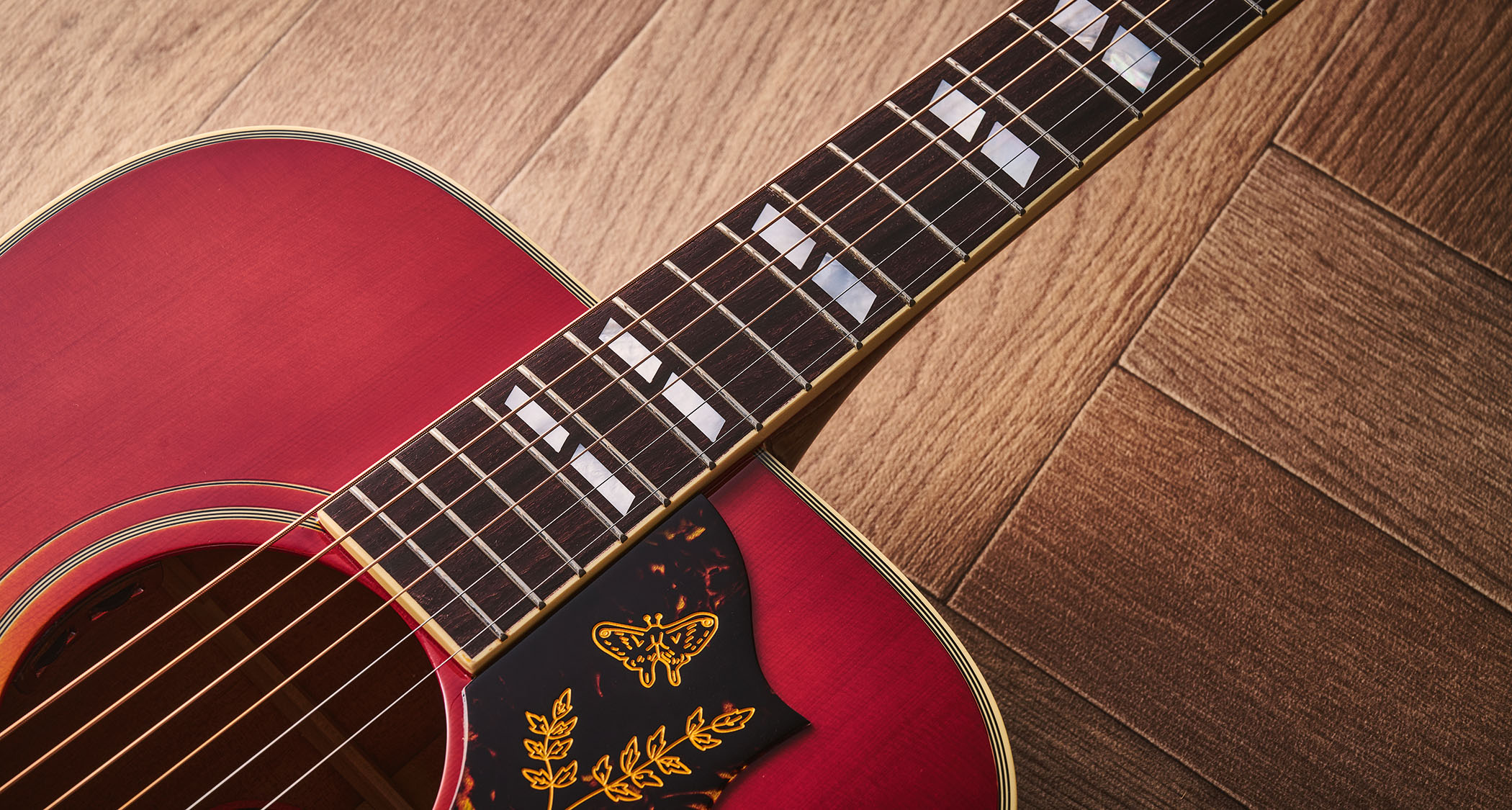
It’s difficult to know where to start when summing up these three new Epiphones. However, the first thing that springs to mind is the value for money when compared with their Gibson forebears.
The SJ and the Hummingbird probably neck and neck for their rich and sonorous acoustic sound.
Each of our Epiphones give a very good account of themselves in the sound stakes – the SJ and the Hummingbird probably neck and neck for their rich and sonorous acoustic sound. The Dove slips very slightly behind due to its more trebly response not being to everyone’s taste. But this is only by a little, and let’s not forget that sound can be very subjective.
Then there are the niggles. We would say that if these guitars have been set up to a factory standard then it needs reviewing because lower actions on acoustic guitars are largely what’s expected these days. A little more care with cutting the nuts wouldn’t go amiss, either. It must be emphasised, however, that both these factors could easily be sorted at point of sale since.
Guitar World verdict: Many guitar shops have their own in-house tech to put things right with he setup, so you’d end up with an extremely nice acoustic guitar at a very affordable price. As always, it’s very much a case of seeking these new models out and auditioning them for yourself. You might just find you’re as impressed as we were.







